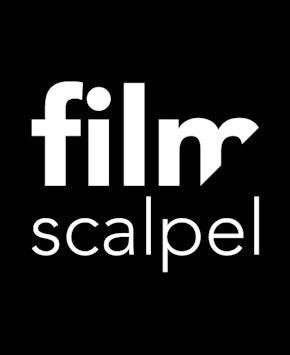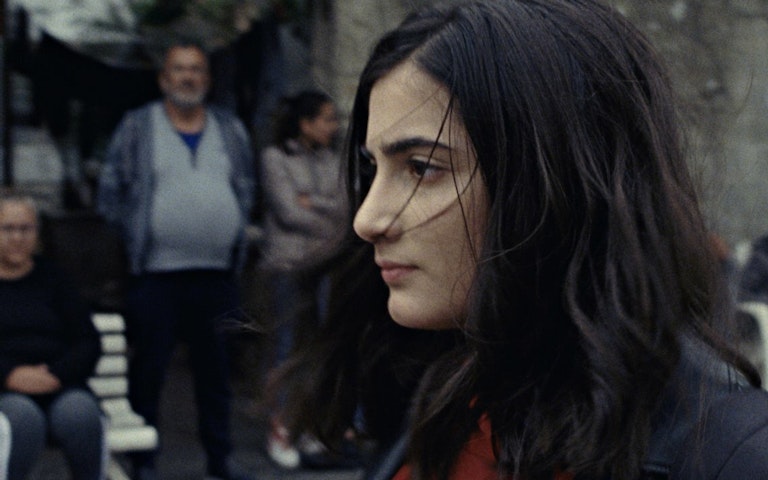- ...
- home
- news
- ffg wide ...
FFG Wide Angle: Video essays Vortex

But what to do with a film that only ran (honorary) circles on the festival circuit? Such is the case with Vortex by Gaspar Noé: the Argentinean's most recent feature hasn't been released anywhere yet and could only be seen at a film festival. Like in Ghent, where the film won the Grand Prix for Best Film. Vortex is still digitally elusive, so making a video essay about the film is out of the question(*).
But no worries. We selected three video essays that can enrich a vision of Vortex. Video essays that shed light on the figure of Gaspar Noé, on his aesthetics and on the special narrative technique he uses in Vortex.
From the Flicker to Gaspar Noé
Feverish. Convulsing. Hectic. Provocative.
These are the first adjectives often heard when hearing the name Gaspar Noé. And not without reason: this iconoclast often unleashes a storm of images and beats that aim for the lower body rather than the head of the viewer.
Carlos Baixauli made a video essay that puts this aspect of Noé's visual style into a film-historical framework. From the Flicker to Gaspar Noé puts fragments from experimental films shoulder to shoulder with images by Noé. They appear to share a predilection for stroboscopic effects, for flickering and flashing.
Experimental filmmakers such as Peter Kubelka, Toshio Matsumoto and Peter Tcherkassky used the flicker to refer to the basic illusion of film: movement is born from the flashing sequence of static images. Gaspar Noé makes use of the hypnotic and exhilarating power of such flickering images: from his succession of flashes, excitement is born.
Even if the title suggests otherwise, Vortex fails to capture the flow of visceral visual impulses that Noé staged in Enter the Void, Climax or Irréversible. Nevertheless, this video essay by Baixauli, published by MUBI, remains interesting viewing material.
Understanding Slowness Through The Cinema of Gaspar Noé
Slowly.
That is a term you do not immediately associate with Gaspar Noé. Yet that is what Joe Humfrey does in his video essay Understanding Slowness Through The Cinema of Gaspar Noé. Humfrey sees a connection between Noé's films and slow cinema, a film movement that focuses on contemplation and takes its time.
Even though Noé's films wallow in disorder, even though he swears by rousing images, the Argentine director also often uses the long take... just like slow cinema does. Humfrey argues that both slow cinema and Noé's films seek to achieve the same affective goal: to induce a deep and even uncomfortable identification with the characters. Because of the long shots, empathy becomes inescapable.
Vortex seems to prove Humfrey's counterintuitive reading right. This intense double portrait of a relationship that disappears in a fog of dementia borders on slow cinema in terms of form, theme and narrative. Silence is given priority over noise, the setting of the atmosphere outweighs the narrative, and minimalism wins from Noé's usual excesses.
The Evolution of Split-Screen Cinema
The most striking formal choice of Vortex is the use of the split-screen technique. Almost the entire film is de-doubled: we are simultaneously shown two (almost) square images, presented side by side. Split screens have been a part of the cinematic language since the early days of cinema, but they are rarely used for an entire film.
In The Evolution of Split-Screen Cinema, British film critic and maker Leigh Singer focuses on this special technique. He does so by means of a long interview with director Mike Figgis. His experimental film Timecode (2000) is one of the best known and most successful examples of this form. Figgis divides the screen into quadrants: he simultaneously shows four different locations and characters with interconnected storylines.
The link Mike Figgis sees between the development of a split-screen narrative and the composition of music is remarkable. Like a composer, Figgis started out from a score. This approach allowed him to harmonise the four partial images as melodic lines.
Vortex, too, seems indebted to the compositional principles of music. The two sections of Noé's diptych often share the same space and the same feeling - a chant of two hushed voices. Sometimes the actions drift apart and the characters each go their own way - then we get a remote duet. In other scenes, the tone in the two images is at odds - dissonance becomes the organizing principle there.
(*) It is not completely impossible. The renowned American video essayist Kevin B. Lee even did something similar twice, each time for the International Film Festival Rotterdam. In 2020, he made a video essay about The Lighthouse van Robert Eggers. Unable to get hold of a digital file of the film, he made his own version of the film, with images of lead actors Willem Dafoe and Robert Pattinson borrowed from other films. Two years earlier, the task was even harder. Then, together with Chloé Galibert-Laîné, he made a video essay over Readers van James Benning, a film they had not even seen. This led to an inventive desktop video essay in which Lee and Galibert-Laîné speculate on the composition of Benning's new film and at the same time discuss his entire oeuvre.

Filmscalpel
Platform and website that pays attention to the format of the video essay, curated by David Verdeure.
